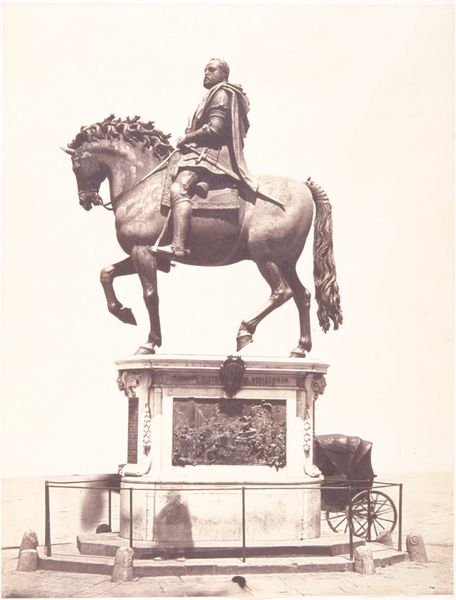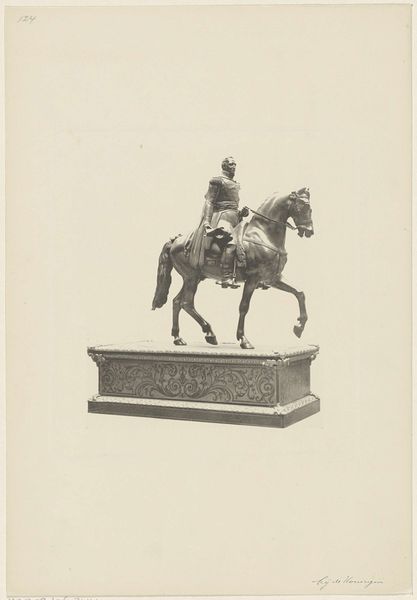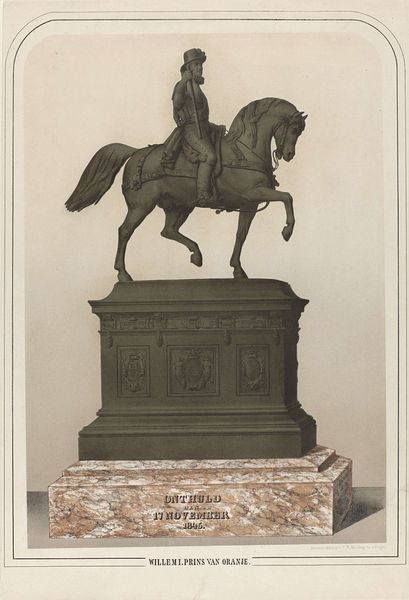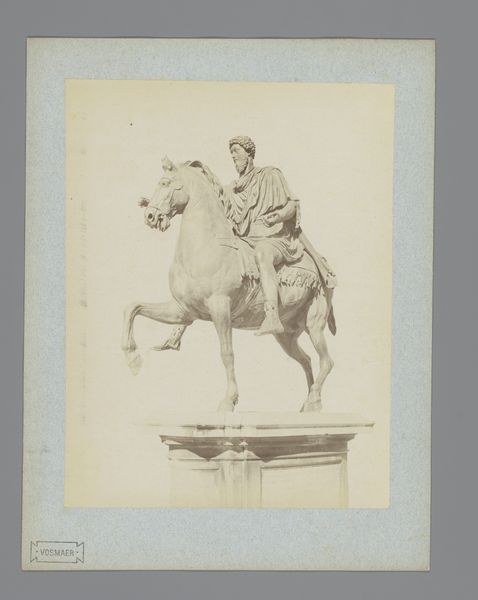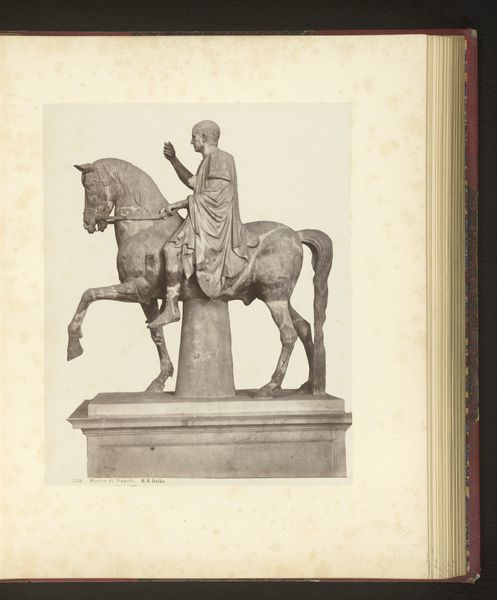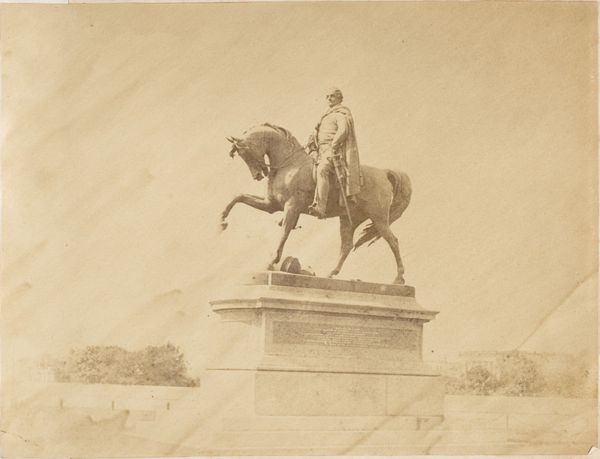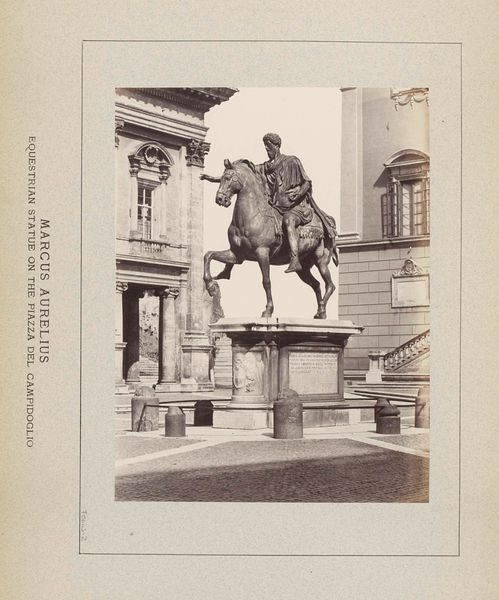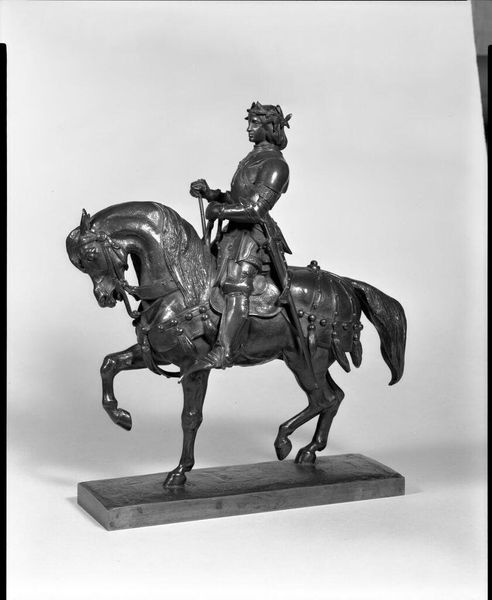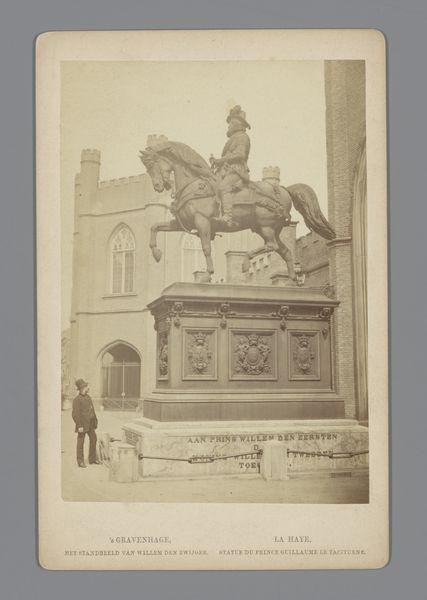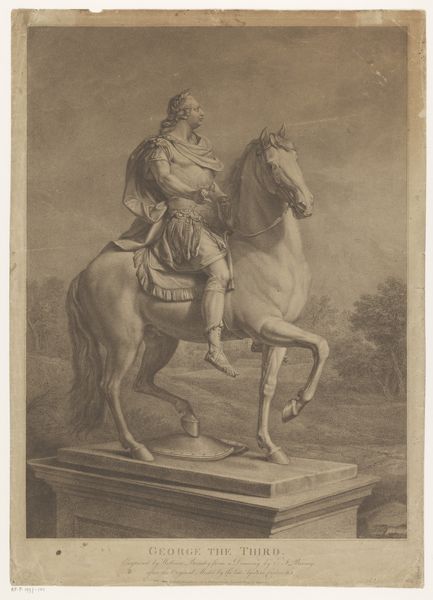
metal, bronze, sculpture
#
portrait
#
metal
#
sculpture
#
bronze
#
sculpture
#
realism
Dimensions: height 158 mm, width 101 mm
Copyright: Rijks Museum: Open Domain
Curator: Here we have a photograph depicting a bronze equestrian statue, "Ruiterstandbeeld van Emanuel Philibert van Savoye," attributed to Giovanni Battista Maggi, dating from around 1870 to 1885. Editor: My first thought is that it is glorifying war and colonialism, that triumphant posture with the sword raised high feels...dated. I notice also it's more of a document. Curator: Absolutely, its intended purpose seems primarily commemorative. Equestrian statues were often commissioned to assert power, legacy and to create visual link between the portrayed and ideals of state. Let's also note that these statues also shaped how historical figures are remembered, and, in that sense, manipulated perceptions of power dynamics. Editor: Exactly. The statue is bronze which allows for such realistic depiction and for duplication and dispersal; which tells me they want a broad viewership to see a certain projection. Bronze suggests strength and durability, but I question what specific version of history it actually protects or sustains. Who gets erased by figures like this one, so prominently displayed? Curator: A valid question. Such displays of power have always invited responses. One aspect of Maggi’s statue is its location, its original placement had immense relevance to Turin in establishing its connection to royalty. In considering its position at the very heart of political activity is fundamental. The monument operates as a visual prop that performs the spectacle of monarchy. Editor: I also notice the base shows what looks like a ruler giving some order, that looks staged for public appearance, is it to create an image of peace. But by presenting the man, we celebrate the entire system he stood for, not always justice. As we reassess statues across the globe, this makes one to examine what is considered valor to certain group is an example of brutality against many other individuals and marginalized community groups. Curator: The layers of power certainly complicate a simple reading. Considering its broader societal impact, from historical contexts to evolving public reception, grants greater insights into how and why this sculpture was designed and preserved. Editor: Thank you. Engaging with these monuments encourages us to have these necessary and honest conversations. The art forces that critical lens.
Comments
No comments
Be the first to comment and join the conversation on the ultimate creative platform.

